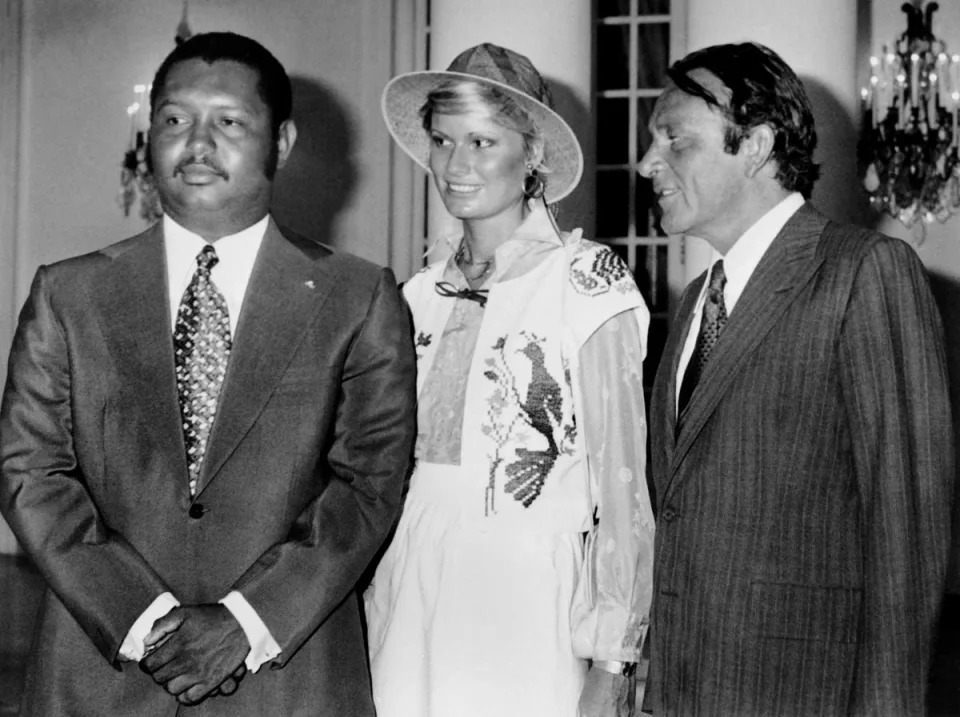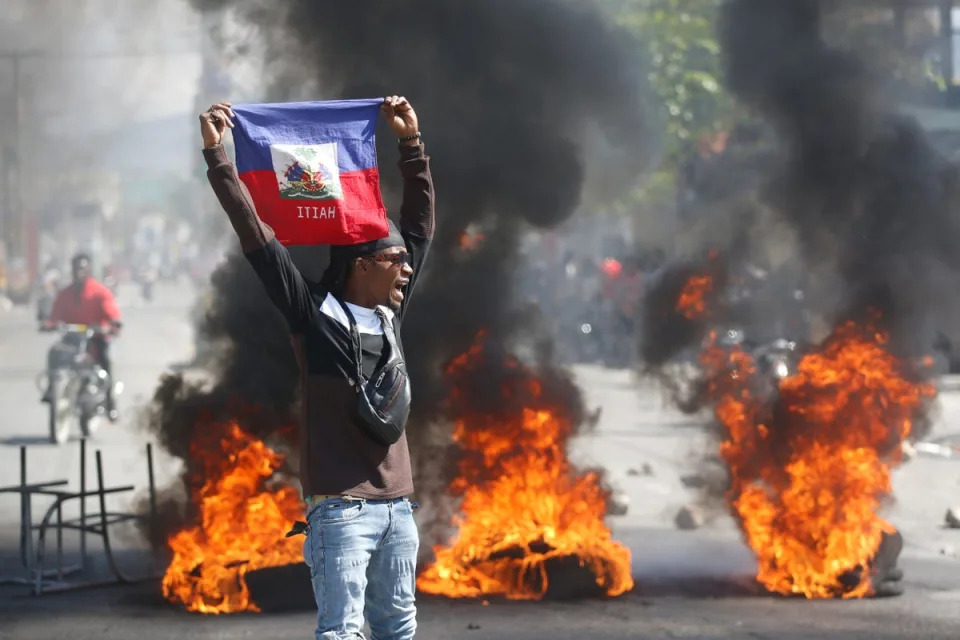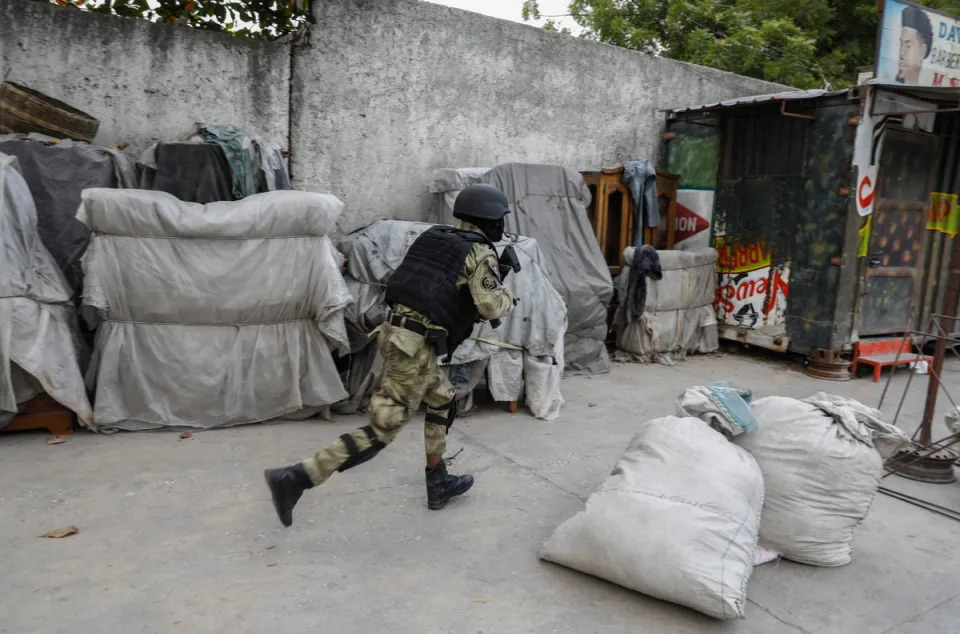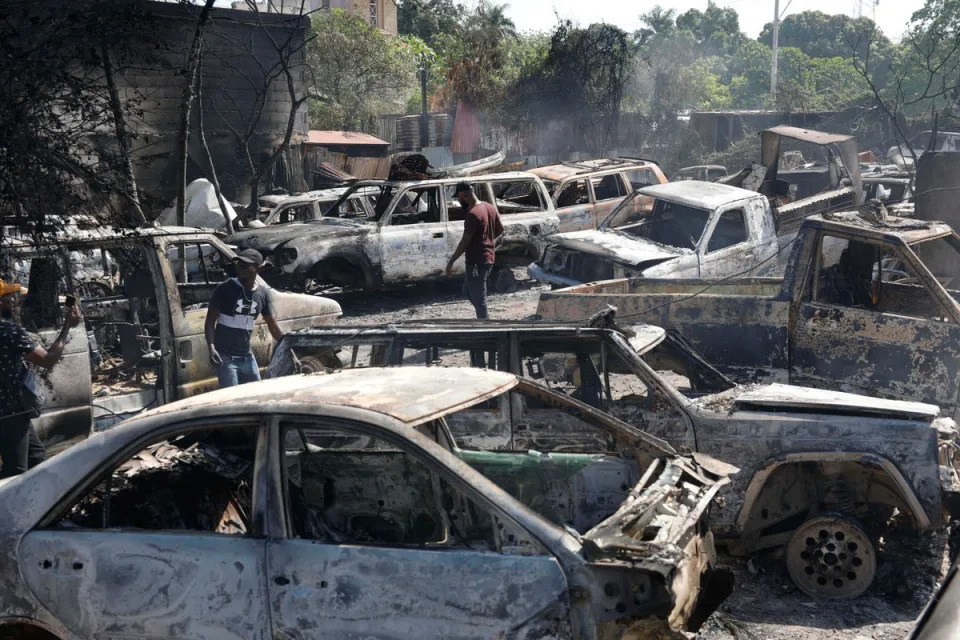By AFP
November 12, 2024

A Christie's employee poses with The Aga Khan Emerald - Copyright AFP Fabrice COFFRINI
A rare square 37-carat emerald owned by the Aga Khan fetched nearly nine million dollars at auction in Geneva on Tuesday, making it the world’s most expensive green stone.
Sold by Christie’s, the Cartier diamond and emerald brooch, which can also be worn as a pendant, dethrones a piece of jewellery made by the fashion house Bulgari, which Richard Burton gave as a wedding gift to fellow actor Elizabeth Taylor, as the most precious emerald.
In 1960, Prince Sadruddin Aga Khan commissioned Cartier to set the emerald in a brooch with 20 marquise-cut diamonds for British socialite Nina Dyer, to whom he was briefly married.
Dyer then auctioned off the emerald to raise money for animals in 1969.
By chance that was at Christie’s very first such sale in Switzerland on the shores of Lake Geneva, with the emerald finding its way back to the 110th edition this year.
It was bought by jeweller Van Cleef & Arpels before passing a few years later into the hands of the United States’ Harry Winston, nicknamed the “King of Diamonds”.
“Emeralds are hot right now, and this one ticks all the boxes,” said Christie’s EMEA Head of Jewellery Max Fawcett.
“We might see an emerald of this quality come up for sale once every five or six years.”
Also set with diamonds, the previous record-holder fetched $6.5 million at an auction of part of Hollywood legend Elizabeth Taylor’s renowned jewellery collection in New York.
By AFP
November 13, 2024

The mysterious necklace contained around 300 carats of diamonds
Elodie LE MAOU
A mysterious diamond-laden necklace with possible links to a scandal that contributed to the downfall of Marie Antoinette, sold for $4.8 million at an auction in Geneva Wednesday.
The 18th century jewel containing around 300 carats of diamonds had been estimated to sell at the Sotheby’s Royal and Noble Jewels sale for $1.8-2.8 million.
But after energetic bidding, the hammer price ticked in at 3.55 million Swiss francs ($4 million), and Sotheby’s listed the final price after taxes and commissions at 4.26 million francs ($4.81 million).
The unidentified buyer, who put in her bid over the phone, was “ecstatic”, Andres White Correal, chairman of the Sotheby’s jewellery department, told AFP.
“She was ready to fight and she did,” he said, adding that it had been “an electric night”.
“There is obviously a niche in the market for historical jewels with fabulous provenances… People are not only buying the object, but they’re buying all the history that is attached to it,” he said.
– ‘Survivor of history’ –
Some of the diamonds in the piece are believed to stem from the jewel at the centre of the “Diamond Necklace Affair” — a scandal in the 1780s that further tarnished the reputation of France’s last queen, Marie Antoinette, and boosted support for the coming French Revolution.
The auction house said the necklace, composed of three rows of diamonds finished with a diamond tassel at each end, had emerged “miraculously intact” from a private Asian collection to make its first public appearance in 50 years.
“This spectacular antique jewel is an incredible survivor of history,” it said in a statement prior to the sale.
Describing the massive Georgian-era piece as “rare and highly important”, Sotheby’s said it had likely been created in the decade preceding the French Revolution.
“The jewel has passed from families to families. We can start at the early 20th century when it was part of the collection of the Marquesses of Anglesey,” White Correal said.
Members of this aristocratic family are believed to have worn the necklace twice in public: once at the 1937 coronation of King George VI and once at his daughter Queen Elizabeth II’s coronation in 1953.
– ‘Spectacular’ –
Beyond that, little is known of the necklace, including who designed it and for whom it was commissioned, although the auction house believes that such an impressive antique jewel could only have been created for a royal family.
Sotheby’s said it was likely that some of the diamonds featured in the piece came from the famous necklace from the scandal that engulfed Marie Antoinette just a few years before she was guillotined.
That scandal involved a hard-up noblewoman named Jeanne de la Motte who pretended to be a confidante of the queen, and managed to acquire a lavish diamond-studded necklace in her name, against a promise of a later payment.
While the queen was later found to be blameless in the affair, the scandal still deepened the perception of her careless extravagance, adding to the anger that would unleash the revolution.
Sotheby’s said the diamonds in the necklace sold Wednesday were likely sourced from “the legendary Golconda mines in India” — considered to produce the purest and most dazzling diamonds.
“The fortunate buyer has walked away with a spectacular piece of history,” Tobias Kormind, head of Europe’s largest online diamond jeweller 77 Diamonds, said in a statement.
“With exceptional quality diamonds from the legendary, now extinct Indian Golconda mines, the history of a possible link to Marie Antoinette along with the fact that it was worn to two coronations, all make this 18th Century necklace truly special.”














